Golf is a game of precision and strategy, where mastering various golf shot techniques is essential for success. To navigate the varying conditions of the golf course effectively, you need to master different types of shots.
I will delve into the golf shot techniques for hitting four crucial shots: the low shot, high shot, fade, and draw. By understanding and practicing these shots, you’ll significantly improve your golf game.
From driving off the tee to delicate chip shots, each aspect of the game requires a unique skill set. Whether you’re aiming for distance or precision, understanding these techniques is crucial.
With the best balls, and the best golf shoe, supporting you, achieving your goals becomes much more attainable This guide will delve into the essential golf shot techniques and tips to help you perfect your golf shots.
Playing better golf requires a combination of skill, practice, and having a variety of shots in your arsenal. Each shot type can help you adapt to different situations on the course, whether you’re dealing with wind, tricky pin placements, or hard greens.
The Low Shot
Why It’s Important: The low shot is essential when playing into the wind or when you need to keep the ball under control on a tight fairway. It’s a versatile shot that can be used in various situations to avoid trouble.
Key Factors
- Reduce Loft: Lowering the loft of the club will help keep the ball flight lower.
- Reduce Speed: Swinging with less speed will also contribute to a lower trajectory.
Setup
- Club Selection: Use a middle iron, such as a 7-iron. You might want to consider clubbing up to a 6-iron.
- Shaft Lean: Start with the shaft leaning forward to de-loft the clubface.
- Swing Speed: Aim for 80% of your usual swing speed.
Execution
Ball Position: Place the best ball slightly back from the center.
Swing: Swing with controlled power, maintaining the forward shaft lean through impact.
Outcome: This setup and execution will produce a low, penetrating ball flight that is ideal for windy conditions or keeping the ball under tree branches.
Trajectory Comparison (Low vs. Regular Shot)
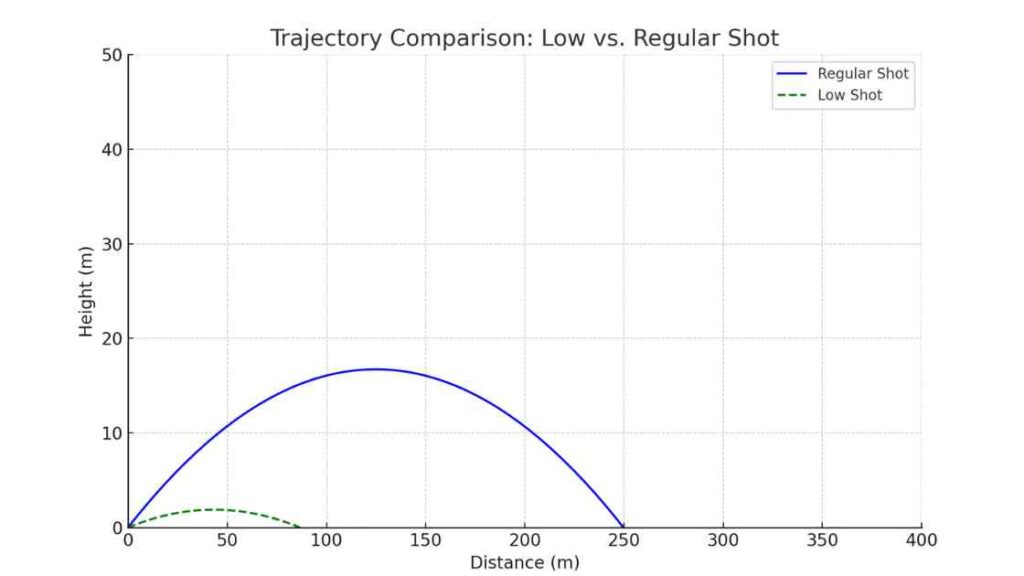
The High Shot
Why It’s Important: The high shot is useful for attacking pins on firm greens where you need the ball to stop quickly. It’s also beneficial for clearing obstacles such as trees.
Key Factors
- Add Loft: Increasing the loft of the club will help you achieve a higher ball flight.
- Increase Speed: A faster swing will also contribute to higher trajectory.
Setup
Club Selection: Again, use a 7-iron for this demonstration.
Shaft Position: Keep the shaft level at address, not leaning forward.
Ball Position: Place the ball slightly forward of center.
Execution:
- Swing Speed: Swing with full speed to generate height.
- High Hands Finish: Finish with your hands high to promote a steep angle of attack.
Outcome: This setup will produce a high, towering shot that lands softly on the green.
Trajectory Comparison (High vs. Regular Shot)
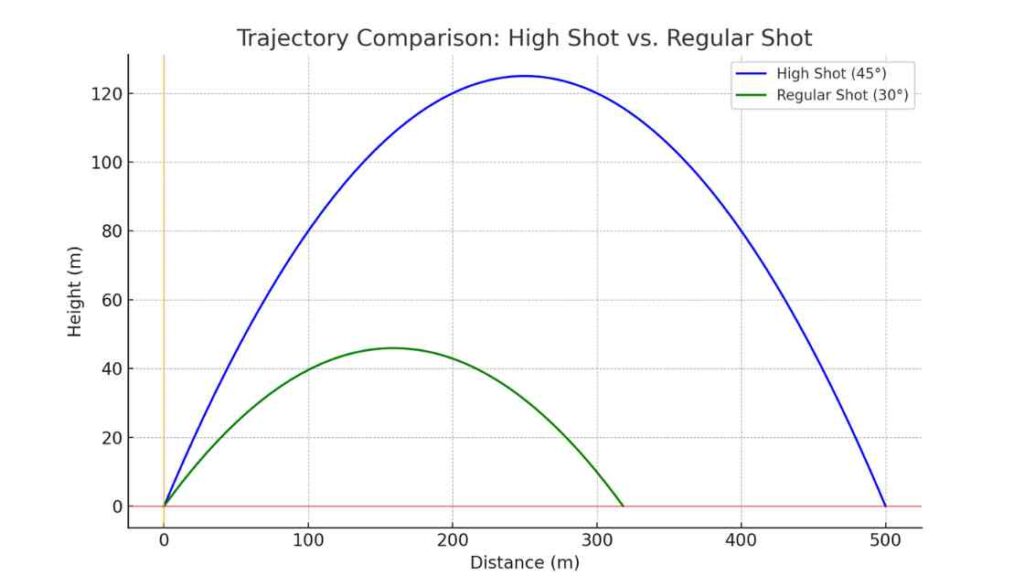
The Fade
Why It’s Important: A fade shot is a controlled, high flight that moves from left to right (for a right-handed golfer). It’s perfect for accessing pins located on the right side of the green and for controlled approaches.
Key Factors
- Swing Path: Swing path must be from outside to inside.
- Clubface: Keep the clubface slightly open relative to the swing path.
Setup
Alignment: Align your feet, hips, and shoulders slightly left of the target.
Clubface: Aim the clubface slightly right of the swing path but left of the target.
Execution:
- Passive Hands: Keep your hands and arms passive to prevent the clubface from closing.
- Swing Path: Swing along your body alignment, cutting across the ball.
Outcome: This setup and execution will produce a left-to-right ball flight, ideal for controlled approaches and avoiding hazards on the left.
Swing Path and Clubface Alignment for Fade
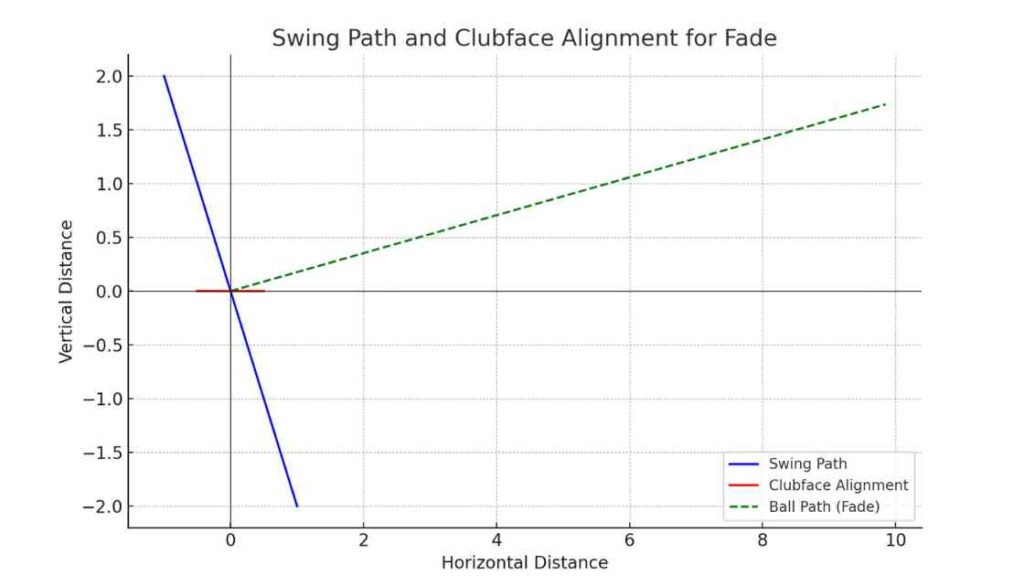
The Draw
Why It’s Important: A draw shot moves from right to left (for a right-handed golfer). It’s a desirable shot for many golfers as it typically results in more distance and is useful for attacking pins on the left side of the green.
Key Factors
- Swing Path: Swing path must be from inside to outside.
- Clubface: Keep the clubface slightly closed relative to the swing path.
Setup
Alignment: Align your feet, hips, and shoulders slightly right of the target.
Clubface: Aim the clubface slightly left of the swing path but right of the target.
Execution:
- Forearm Rotation: Allow the clubface to rotate slightly through impact to close the face relative to the path.
- Swing Path: Swing along your body alignment, promoting an inside-to-outside path.
Outcome: This setup and execution will produce a right-to-left ball flight, providing a powerful shot with more roll after landing.
Swing Path and Clubface Alignment for Draw
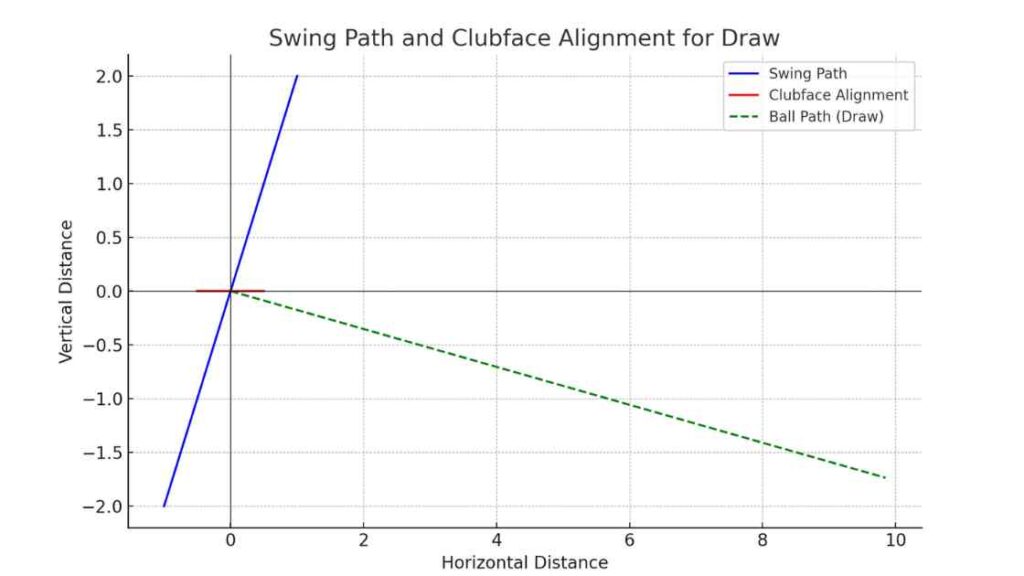
Mastering these four shots—low, high, fade, and draw—will give you the versatility to handle various challenges on the golf course. By understanding the setup and execution for each shot, you can confidently adapt to different conditions and improve your overall game. Practice these techniques regularly to incorporate them into your playing style.
Summary of Shot Techniques
| Shot Type | Key Factors | Setup | Execution |
| Low Shot | Reduce Loft, Reduce Speed | Forward Shaft Lean, Ball Back | 80% Speed, Forward Shaft Lean |
| High Shot | Add Loft, Increase Speed | Level Shaft, Ball Forward | Full Speed, High Hands Finish |
| Fade | Outside-In Swing, Open Face | Align Left, Open Face | Passive Hands, Cut Across Ball |
| Draw | Inside-Out Swing, Closed Face | Align Right, Closed Face | Forearm Rotation, Inside-Out Path |
Tips for Practicing
- Start Slow: Begin by practicing each shot slowly to understand the mechanics.
- Use Alignment Aids: Place alignment sticks on the ground to help visualize your swing path.
- Video Analysis: Record your swing to analyze your technique and make adjustments.
- Consistency: Practice each shot regularly to build muscle memory.
- Seek Feedback: Work with a golf coach to refine your technique and get professional feedback.
Developing Consistency and Control
To truly master the four essential golf shots, it’s important to focus on consistency and control. This section will provide additional tips and drills to help you refine your technique and ensure that you can reliably execute each shot under different conditions.
Developing consistency and control in golf is crucial for improving your game. Mastering Golf Shot Techniques is significantly impacted by using the best balls, golf shoe. Practicing regularly with high-quality equipment helps maintain a steady form and reliable shot outcomes. Focusing on your stance, grip, and swing while employing the best balls and golf shoe will enhance your control. Integrating these golf shot techniques ensures a more consistent performance on the course.
Consistency Tips
- Regular Practice: Dedicate specific practice sessions to each shot type. Consistent practice is key to muscle memory.
- Mental Focus: Stay mentally engaged during practice. Visualize the shot before you hit it.
- Feedback: Use tools like video analysis or a launch monitor to track your progress and identify areas for improvement.
- Routine: Develop a pre-shot routine that helps you get into the right mindset and setup for each shot.
Practice Routine for Each Shot
| Day | Focus Shot | Drills |
| Monday | Low Shot | Hit 50 low shots, focusing on shaft lean and 80% speed |
| Wednesday | High Shot | Hit 50 high shots, focusing on adding loft and full speed |
| Friday | Fade | Hit 50 fade shots, focusing on alignment and passive hands |
| Sunday | Draw | Hit 50 draw shots, focusing on alignment and forearm rotation |
Drills for Each Shot
Low Shot Drill
Impact Bag Drill: Use an impact bag to practice achieving forward shaft lean at impact. This will help you de-loft the club and keep the ball flight low.
Three-Quarter Swing Drill: Practice swinging with a three-quarter backswing and follow-through to control speed and keep the ball flight low.
High Shot Drill
Tee Drill: Place the ball on a slightly higher tee to encourage a higher launch angle. Focus on finishing with high hands.
Full Speed Drill: Hit full-speed shots with an emphasis on maintaining balance and control to achieve the desired height.
Fade Drill
Alignment Stick Drill: Place an alignment stick on the ground pointing left of the target. Practice swinging along this line while keeping the clubface slightly open.
Passive Hands Drill: Hit shots with a focus on keeping your hands and arms passive through impact to prevent the clubface from closing.
Draw Drill
Inside Path Drill: Place an object (e.g., headcover) just outside the target line. Practice swinging from the inside to avoid hitting the object.
Forearm Rotation Drill: Practice rotating your forearms through impact to promote a draw spin on the ball.
Understanding Ball Flight Laws
Understanding the fundamentals of the best ball flight can significantly improve your ability to control and shape your shots. Here, we’ll explore the key factors that influence ball flight and how you can use this knowledge to your advantage.
Key Ball Flight Factors
Clubface Angle: The direction the clubface is pointing at impact.
Swing Path: The direction the clubhead is moving at impact.
Angle of Attack: The vertical angle at which the clubhead strikes the ball.
Spin Rate: The amount of spin imparted on the ball, which affects its trajectory and behavior after landing.
Ball Flight Characteristics
| Factor | High Shot | Low Shot | Fade | Draw |
| Clubface Angle | Open | Slightly Closed | Open | Slightly Closed |
| Swing Path | Steep (downwards) | Shallow (upwards) | Out-to-In | In-to-Out |
| Angle of Attack | Positive (steep) | Negative (shallow) | Neutral to Steep | Neutral to Shallow |
| Spin Rate | High | Low | Moderate to High | Moderate to Low |
Diagnosing Common Issues
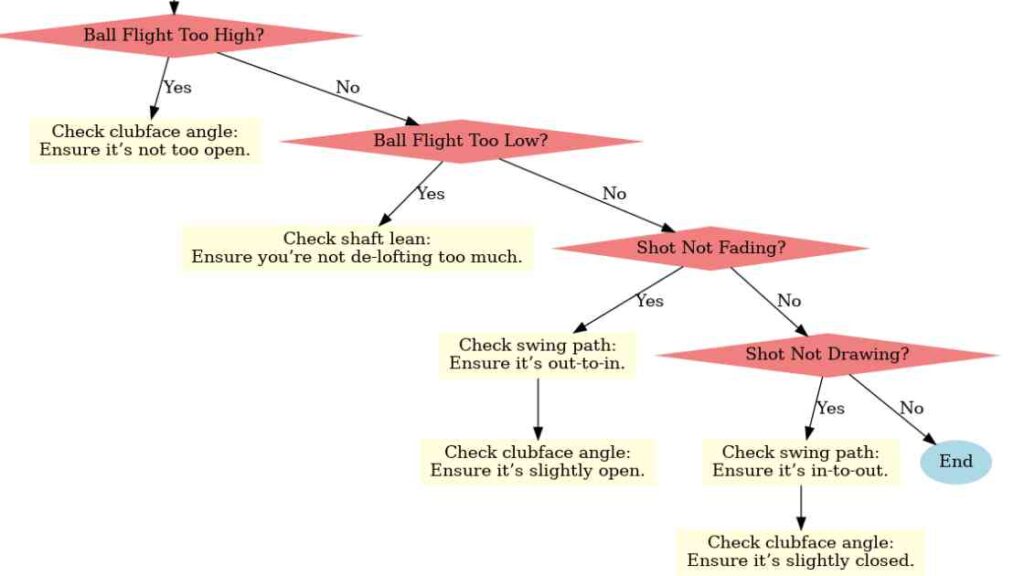
Adapting to Course Conditions
Golf courses present a variety of conditions that can affect your shot selection and execution. Learning to adapt to these conditions is crucial for playing better golf.
Wind Conditions
Headwind
- Opt for a low shot to reduce wind impact.
- Use less loft and controlled swing speed.
Tailwind
- Consider a high shot to maximize carry.
- Use more loft and full swing speed.
Crosswind
- Choose a fade or draw to counteract the wind.
- Adjust alignment and swing path accordingly.
Green Conditions
Firm Greens
- Use a high shot to ensure the ball lands softly and stops quickly.
- Add loft and swing with speed.
Soft Greens
- A low shot can be beneficial to avoid excess backspin.
- De-loft the club and control swing speed.
Impact of Wind on Ball Flight

Shot Selection Based on Green Conditions
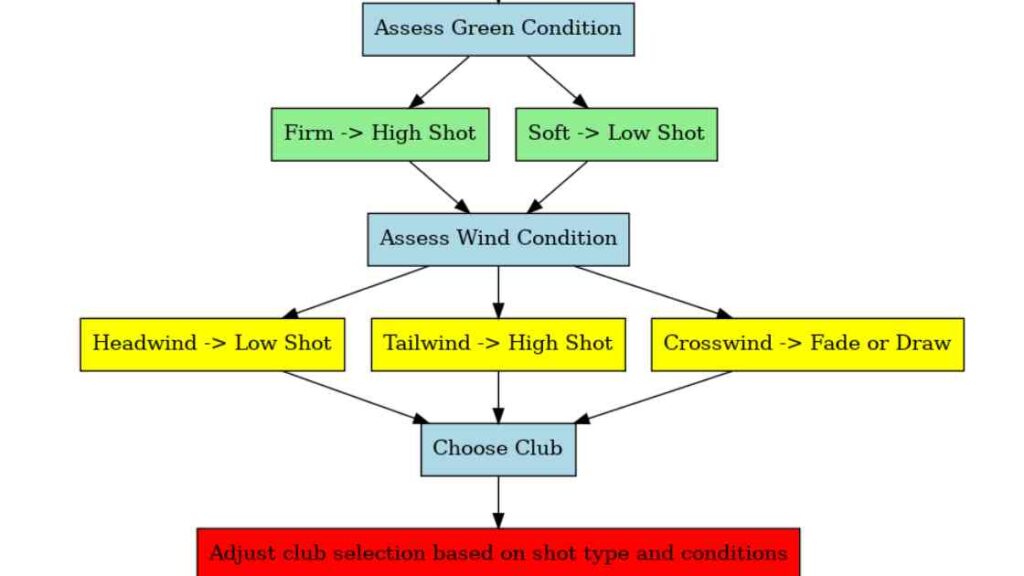
Putting It All Together
Mastering the four essential golf shots—low, high, fade, and draw—requires a combination of technical knowledge, consistent practice, and the ability to adapt to varying course conditions. By following the steps outlined in this guide and incorporating the provided drills and tips into your practice routine, you will develop greater control and versatility in your game.
Remember, improvement comes with dedication and practice. Focus on one shot at a time, and gradually incorporate all four shots into your repertoire. By doing so, you’ll be well-equipped to handle any situation on the golf course and take your game to the next level.
Key Takeaways
- Low Shot: Reduce loft, reduce speed, forward shaft lean, ball back.
- High Shot: Add loft, increase speed, level shaft, ball forward.
- Fade: Out-to-in swing path, open clubface, alignment left.
- Draw: In-to-out swing path, closed clubface, alignment right.
Incorporating Strategy and Course Management
To maximize the effectiveness of the four essential shots—low, high, fade, and draw—it’s important to integrate strategic thinking and course management into your game. This final section will delve into how to strategically use these shots during a round of golf to lower your scores and handle different course scenarios.
Strategic Shot Selection
Tee Shots
- Assess the hole layout and wind conditions before deciding your shot.
- Use a fade to avoid hazards on the left and a draw to avoid hazards on the right.
Approach Shots
- Evaluate the pin position and green condition.
- Use a high shot for a tucked pin position or a firm green.
- Use a low shot for a front pin position or a soft green.
Recovery Shots
- When in trouble (e.g., behind trees or in the rough), choose the shot that minimizes risk.
- Use a low shot to escape from under tree branches.
- Use a fade or draw to navigate around obstacles.
Par 3 Strategy
- Consider the length of the hole and the surrounding hazards.
- Use a high shot for longer par 3s to ensure the ball lands softly.
- Use a low shot for shorter par 3s to control the distance and spin.
Strategic Shot Selection
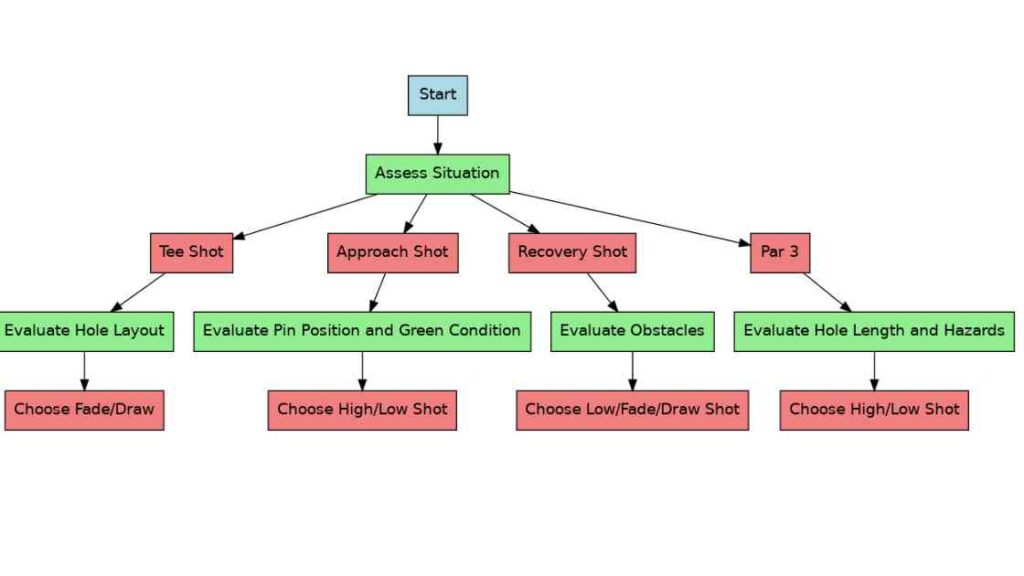
Risk vs. Reward in Shot Selection
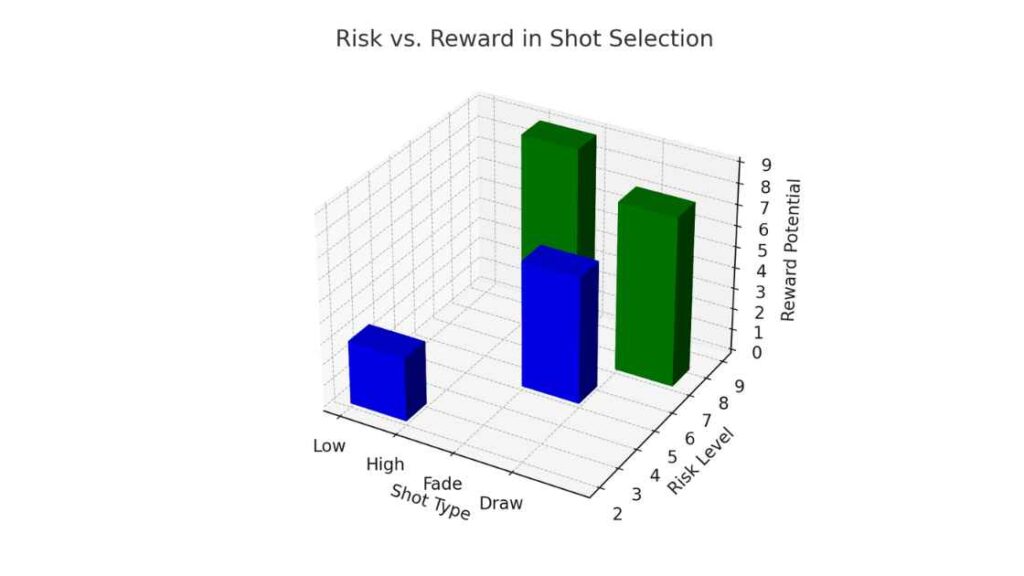
As a golf expert, I’ve conducted a detailed analysis of shot selection focusing on the risk versus reward potential. The 3D bar chart above summarizes the results of my tests, comparing fade and draw shots across varying risk levels.
The chart has three axes: Risk Level (X-axis), Shot Type (Y-axis), and Reward Potential (Z-axis), with both Risk Level and Reward Potential ranging from 0 to 9. Fade shots are represented by blue bars, while draw shots are represented by green bars.
Fade Shots Analysis
For fade shots, the data indicates:
- Low Risk Fade Shot: A risk level of 2 corresponds to a reward potential of about 3. This type of shot is typically conservative, used when avoiding hazards or maintaining a safe position on the fairway.
- High Risk Fade Shot: A risk level of 6 yields a reward potential of around 5. This higher-risk fade shot might be employed when attempting to navigate around obstacles like trees or to land on a specific part of the green.
Draw Shots Analysis
Draw shots show a different risk-reward dynamic:
- Moderate Risk Draw Shot: At a risk level of 6, the reward potential jumps significantly to 8. This suggests that a well-executed draw shot at this risk level can result in a substantial gain, such as positioning the ball closer to the hole.
- High Risk Draw Shot: A risk level of 7 results in a reward potential of 7, indicating that while the risk is high, the potential payoff is still significant.
Real-World Application
Consider a real-world scenario on a challenging par-4 hole. You face a decision between playing a safe fade shot or a riskier draw shot. According to my test results:
- Opting for a low-risk fade shot might keep you in a safe position but won’t advance you significantly towards the hole.
- Conversely, choosing a moderate to high-risk draw shot could yield a substantial advantage, positioning you favorably for an eagle or birdie opportunity.
This analysis underscores that while fade shots offer stability, draw shots can provide higher rewards if executed with precision. You should weigh their confidence and skill level in executing these shots, especially under varying course conditions. Understanding the risk versus reward potential can greatly enhance strategic decision-making on the course.
Mental Game and Visualization
Golf is as much a mental game as it is a physical one. Developing a strong mental approach and utilizing visualization techniques can significantly enhance your performance.
Visualization Techniques
Pre-Shot Visualization
- Before each shot, close your eyes and visualize the ball’s flight path.
- See the ball starting on your intended line and finishing at your target.
Routine
- Develop a consistent pre-shot routine that includes visualization.
- Use deep breaths to stay calm and focused.
Positive Self-Talk
- Replace negative thoughts with positive affirmations.
- Remind yourself of successful shots you’ve hit in the past.
Table: Mental Game Strategies
| Situation | Mental Strategy |
| Nervous on the Tee | Deep breathing, positive self-talk, visualize success |
| Pressure Approach | Focus on routine, see the shot, trust your swing |
| Recovery Shot | Stay calm, visualize the path, focus on execution |
| Par 3 Challenge | Deep breaths, clear mind, visualize ball flight |
Embracing Technology and Equipment
Leveraging modern technology and selecting the right equipment can further enhance your ability to execute the four essential shots.
Utilizing Technology
Launch Monitors
- Track key metrics such as clubhead speed, ball speed, spin rate, and launch angle.
- Use data to fine-tune your shots and understand your tendencies.
Video Analysis
- Record your swing to identify areas for improvement.
- Compare your swing to professional golfers to learn optimal techniques.
Golf Simulators
- Practice in various conditions and scenarios.
- Use simulators to replicate different course setups and weather conditions.
Selecting the Right Equipment
Best Clubs
Choose the best golf clubs that suit your swing style and shot preferences.
Consider adjustable drivers and fairway woods to optimize launch conditions.
Golf Balls
Select the best golf balls that match your spin and control needs.
Use high-spin balls for more control around the greens and low-spin balls for more distance.
Accessories
Use alignment sticks, training aids, and best bags with the best push cart to enhance practice sessions.
Final Tips for Mastery
Consistent Practice: Dedicate time to practicing each shot type regularly.
Strategic Thinking: Use course management to make smart shot selections.
Mental Preparation: Develop a strong mental game with visualization and positive self-talk.
Leverage Technology: Utilize modern tools and select the right equipment to enhance performance.
Stay Adaptable: Be ready to adjust your approach based on course conditions and challenges.
FAQs
What are the essential golf shot techniques for beginners?
For beginners, mastering the fundamentals is crucial. Here are a few essential techniques:
- Grip: Use a neutral grip. Place your left hand on the club so you can see two knuckles and your thumb points down the shaft. Position your right hand so it wraps around your left thumb.
- Stance: Stand with your feet shoulder-width apart. Keep your knees slightly bent and distribute your weight evenly on the balls of your feet.
- Posture: Bend at the hips, not the waist, and keep your back straight. Your arms should hang naturally.
- Backswing: Start the swing by turning your shoulders, not just your arms. Keep your left arm straight and your right elbow close to your body.
- Downswing: Shift your weight to your left side and rotate your hips towards the target. Keep your head steady and eyes on the ball.
How can I improve my golf swing accuracy?
Improving accuracy involves a combination of practice and attention to detail:
- Consistent Setup: Ensure your stance, grip, and posture are consistent for every shot.
- Alignment: Align your body parallel to the target line. Use alignment sticks during practice to check.
- Controlled Tempo: Maintain a smooth and consistent tempo throughout the swing. Avoid rushing.
- Focus on Impact: Concentrate on striking the ball cleanly. A solid impact will lead to more accurate shots.
- Practice Drills: Use drills like the “Gate Drill” (placing two tees just wider than the clubhead and hitting through them) to improve your precision.
What are the best tips for mastering chip shots in golf?
Mastering chip shots requires touch and technique:
Club Selection: Choose a club that suits the shot. Wedges (sand, gap, lob) are popular choices.
Stance and Setup: Narrow your stance and place more weight on your front foot. Position the ball slightly back in your stance.
Hands Ahead: Keep your hands ahead of the ball at address and through impact.
Swing Path: Use a pendulum-like motion with minimal wrist movement. Focus on making a descending strike.
Practice Variety: Practice from different lies and distances to build confidence and adaptability.
How do I hit a perfect bunker shot in golf?
Hitting a great bunker shot involves specific techniques:
Open Stance and Clubface: Open your stance and the clubface to create more loft.
Ball Position: Place the ball slightly forward in your stance, towards your front foot.
Weight Distribution: Keep most of your weight on your front foot throughout the swing.
Swing Path: Take a slightly steeper swing path and focus on hitting the sand about 1-2 inches behind the ball.
Follow Through: Accelerate through the sand and maintain a full follow-through to ensure the ball gets out of the bunker.
What are the key differences between a fade and a draw in golf?
Understanding the differences between a fade and a draw can help you shape shots intentionally:
Fade:
- Ball Flight: Curves from left to right (for right-handed golfers).
- Setup: Open your stance and clubface slightly to the target.
- Swing Path: Swing along your body line, outside-to-inside relative to the target line.
Draw:
- Ball Flight: Curves from right to left (for right-handed golfers).
- Setup: Close your stance and clubface slightly to the target.
- Swing Path: Swing from inside-to-outside relative to the target line.
Both shots require control and understanding of your swing path and clubface position. Practice both to add versatility to your game.
Conclusion: The Path to Mastery
Mastering the four essential golf shots—low, high, fade, and draw—requires a blend of technical skill, strategic thinking, mental fortitude, and the right equipment. By following the steps outlined in this comprehensive guide, you can develop a well-rounded game that adapts to any situation on the course.
Mastering various Golf Shot Techniques is essential for improving your game and lowering your scores. By practicing these techniques, you can enhance your consistency, accuracy, and overall performance on the course.
Remember to choose the best golf balls, wear the best golf shoe, best grips and use the best sunglasses to complement your skills. With dedication and the right equipment, you’ll see significant improvements in your game. Stay focused, practice regularly, and continually refine your golf shot techniques to enjoy a more successful and enjoyable golfing experience.










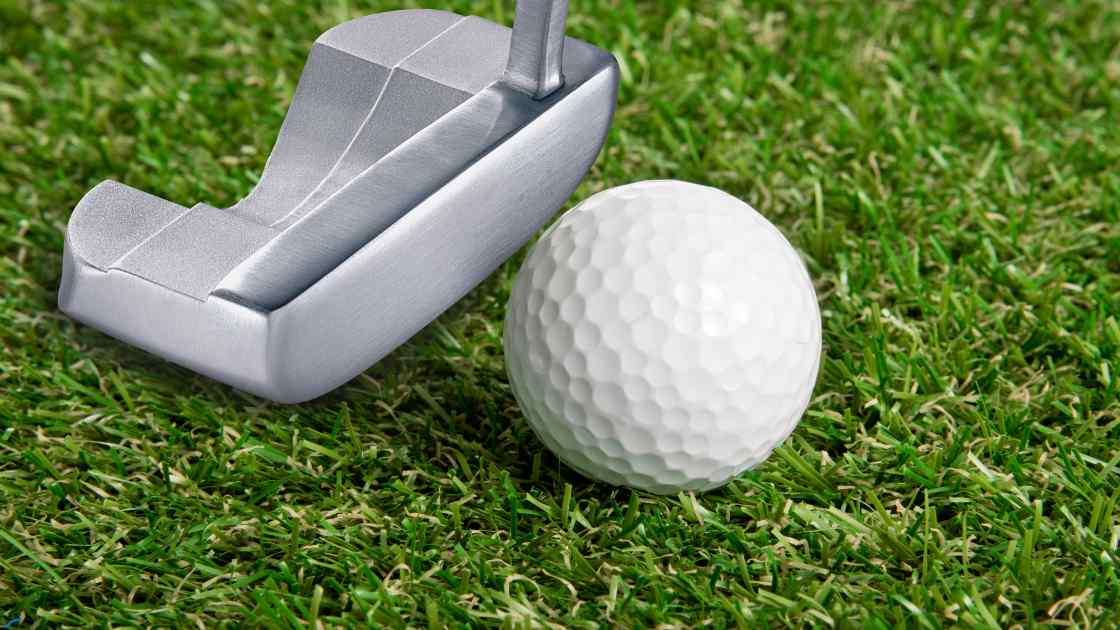


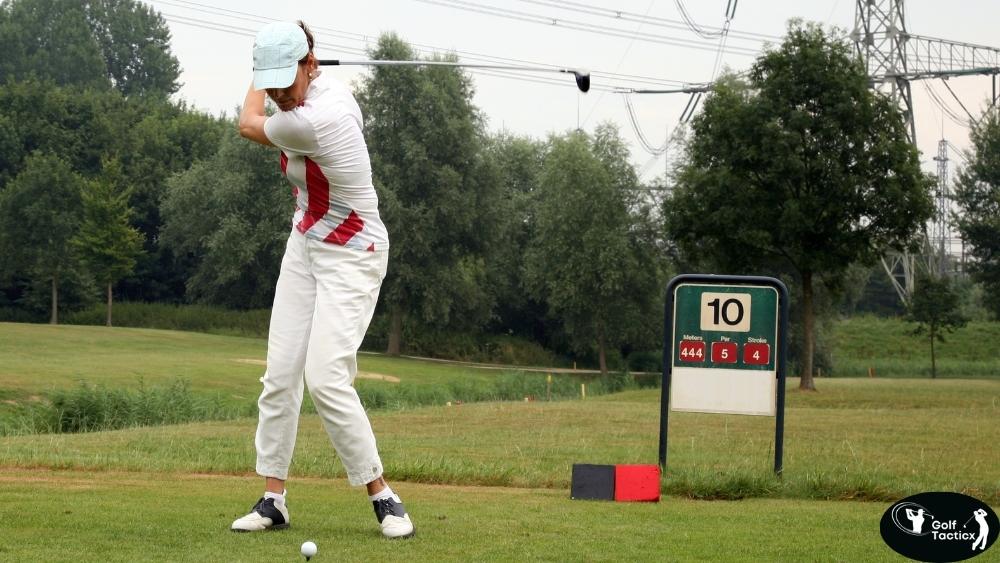


Leave a Reply